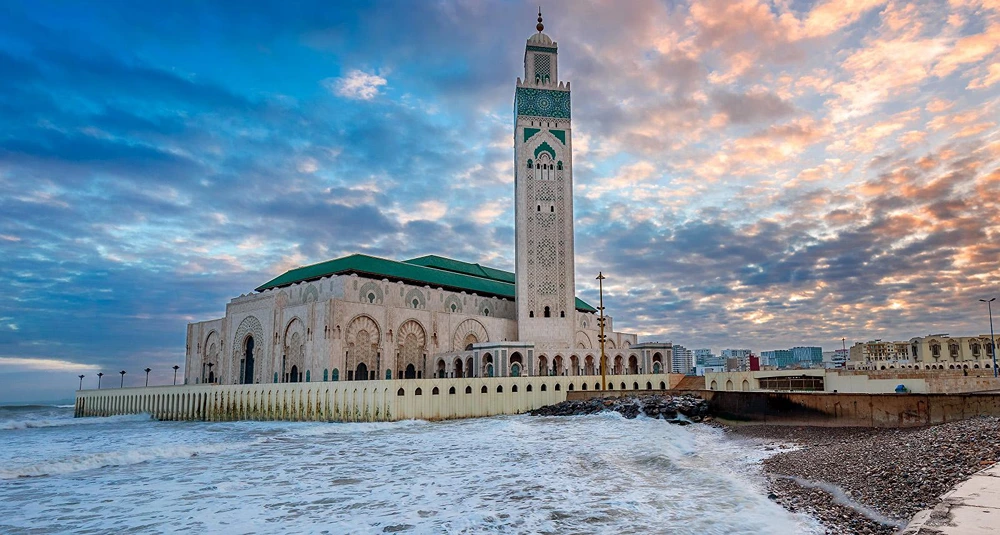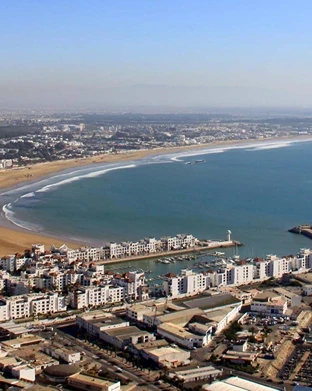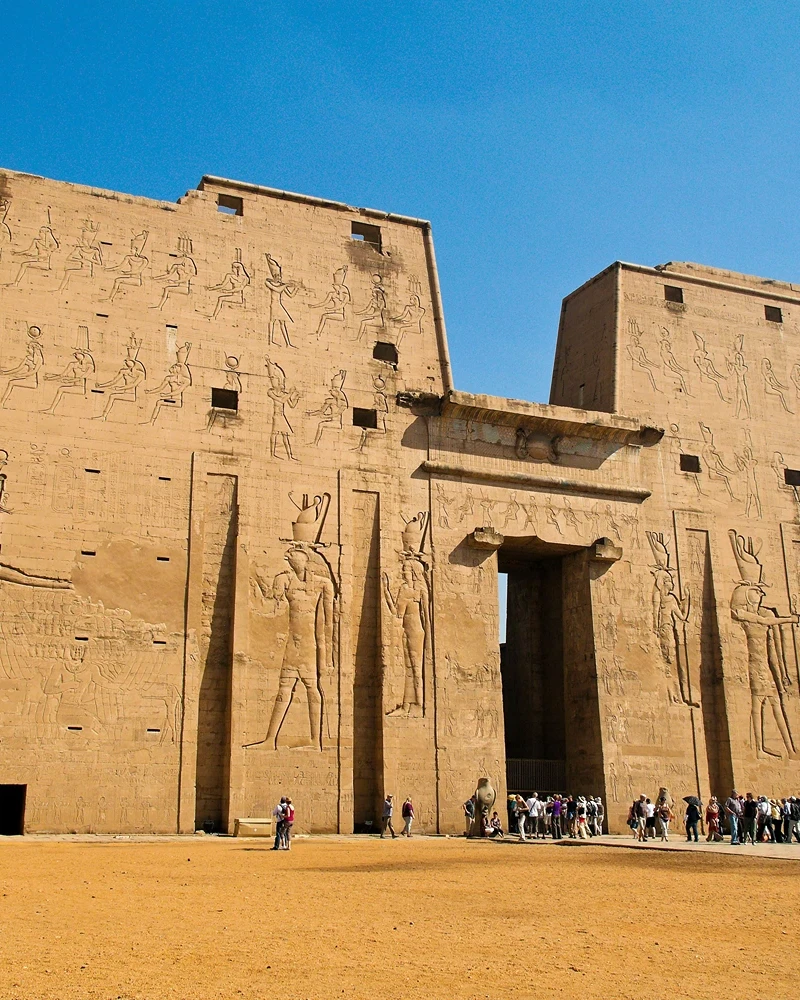What could inspire a king to commission a mosque so unique it would become a defining landmark of an entire city? Conceived by King Hassan II in 1984 and rising from the shores of the Atlantic Ocean, the Hassan II Mosque is more than just a place of worship; it is Casablanca’s proud emblem. Understanding its significance requires delving into its detailed history, from the initial idea and groundbreaking in 1989 to its grand completion in 1993. Join us as we explore how this architectural marvel was brought to life, enriching Casablanca’s cultural landscape forever.
Hassan II Mosque: A Historical Overview
The Hassan II Mosque in Casablanca, Morocco, was first conceived in 1984 with the intent to create a monumental landmark. Commissioned by King Hassan II on his birthday, July 9, 1980, the mosque aimed to provide Casablanca with a unique symbol of religious and architectural grandeur.
Construction of the mosque began in 1989 and was completed in 1993. Over 10,000 artisans and laborers from around Morocco participated in this massive project, which involved intricate craftsmanship and the use of traditional materials. The mosque’s completion marked a significant achievement in Moroccan architecture and engineering, showcasing both modern techniques and historical influences.
The completion of the Hassan II Mosque was not just a feat of construction but also a monumental gift to the city of Casablanca. It stands as a testament to Morocco’s rich cultural heritage and religious devotion, serving both as a place of worship and a major tourist attraction. The mosque’s imposing structure, with its stunning minaret and oceanfront location, continues to attract visitors from around the world, symbolizing the unity and spiritual resilience of the Moroccan people.
Architectural Marvels of the Hassan II Mosque

The Hassan II Mosque showcases exceptional materials and craftsmanship, making it an architectural masterpiece. The mosque utilizes materials from the Atlas Mountains, renowned for their quality and durability. A unique plaster recipe, incorporating soap and egg yolk, was used to create intricate and smooth finishes throughout the mosque. The chandeliers, a striking feature of the mosque, were crafted in Milan, Italy. A total of 50 chandeliers illuminate the interior with an elegant glow, highlighting the mosque’s grandeur.
Innovative design elements further distinguish the Hassan II Mosque. The roof is retractable, taking only three minutes to open and two minutes to close, allowing natural sunlight to flood the prayer hall. The minaret, standing at 140 meters, is the tallest in the world. It features a laser that points towards Mecca, aiding worshippers in aligning their prayers. The mosque’s design also takes advantage of its oceanfront location, offering stunning views of the Atlantic Ocean, enhancing its serene ambiance.
- Atlas Mountains materials
- Unique plaster recipe
- 50 Milan-crafted chandeliers
- Retractable roof mechanism
- Tallest minaret with laser
- Ocean-view design
These features collectively enhance the mosque’s grandeur, making it not only a place of worship but also a symbol of Moroccan architectural innovation and cultural heritage. The combination of traditional craftsmanship with modern engineering marvels contributes to its status as one of the most impressive mosques in the world.
Visiting the Hassan II Mosque: Hours, Tickets, and Tours
Non-Muslims can visit the Hassan II Mosque through guided tours, providing a unique opportunity to explore one of Morocco’s most significant landmarks. Tickets cost 130 Dirhams per person, which includes a 45-minute to 1-hour guided tour. These tours are available in multiple languages, such as English, French, German, and Spanish, making it accessible to a diverse range of visitors.
Guided tour schedules vary by season and cultural observances. During the winter, tours are available from Saturday to Thursday in the mornings, with one afternoon tour. In the summer, an additional tour is offered at noon, with afternoon tours starting at 3 PM and 4 PM. During Ramadan, tours are only available in the mornings, reflecting the mosque’s religious commitments during this period.
- Winter tour times: Morning and one afternoon tour
- Summer tour times: Morning, noon, and afternoon tours at 3 PM and 4 PM
- Ramadan tour times: Morning only
- Languages offered: English, French, German, Spanish
- Ticket price and duration of tours: 130 Dirhams for 45 minutes to 1 hour
Planning ahead and checking the current schedule is crucial for visitors. The mosque’s tour times can change, especially during religious holidays and special events. Ensuring you have the most up-to-date information will enhance your visit, allowing you to fully appreciate the architectural and cultural splendor of the Hassan II Mosque.
Exploring the Interior and Unique Features of the Hassan II Mosque

The interior of the Hassan II Mosque is designed to accommodate a large number of worshippers, showcasing its grand scale and architectural prowess. The main prayer hall can hold up to 25,000 worshippers, with 20,000 men on the main floor and an additional 5,000 women on a specially designated balcony. This layout ensures that the mosque can serve a vast congregation during significant religious events.
One of the most remarkable features of the mosque is its glass floor. This unique element allows worshippers to look down and see the sea beneath them, creating a serene and reflective atmosphere. The glass floor not only adds to the aesthetic appeal of the mosque but also emphasizes its connection to the natural surroundings, enhancing the spiritual experience for those who come to pray.
The mosque also includes two large ablution rooms, essential for the pre-prayer washing ritual. These rooms are adorned with intricate carvings and utilize a special plaster that absorbs humidity, ensuring a comfortable and hygienic environment. The detailed craftsmanship in these areas reflects the high level of skill and dedication involved in the mosque’s construction.
- Main prayer hall capacity
- Balcony for women
- Glass floor
- Ablution rooms
Cultural and Religious Significance of the Hassan II Mosque
The Hassan II Mosque stands out for its openness to non-Muslims, a rarity among mosques, significantly enhancing its cultural and educational value. This openness provides a unique opportunity for visitors to delve into Moroccan and Islamic history and culture. By welcoming people from various backgrounds, the mosque serves as a bridge for cultural understanding and exchange, fostering a deeper appreciation of Islamic traditions and Moroccan heritage.
For Muslims, the Hassan II Mosque is a vital religious center. It is used for daily prayers and special Friday services, accommodating thousands of worshippers. The mosque’s grandeur and scale make it an ideal location for significant religious events, providing a spiritual haven for the Muslim community. The mosque’s design and ambiance contribute to an atmosphere conducive to prayer and reflection, further emphasizing its religious importance.
The significance of the Hassan II Mosque extends beyond its architectural marvels. It symbolizes Morocco’s rich cultural tapestry and religious devotion, making it an essential destination for both locals and international visitors. The mosque’s role in promoting cultural and educational understanding, combined with its importance for daily prayers and special services, underscores its unique position in Moroccan and Islamic culture.
Visitor Tips: Dress Code, Photography, and Nearby Attractions

Visitors to the Hassan II Mosque must adhere to a specific dress code to respect the sanctity of the religious site. Clothing should cover the shoulders, chest, and knees. Women are not required to cover their hair, which is a notable allowance compared to other religious sites. Ensuring proper attire not only shows respect but also allows for a smooth entry into the mosque.
Photography is permitted inside the mosque, but only outside of worship times. This rule helps maintain the tranquility and sanctity of the space during prayers. Visitors should be mindful of this restriction and plan their photography sessions accordingly. Capturing the intricate designs and vast interiors can be a rewarding experience, highlighting the mosque’s architectural beauty.
- Medina
- Mohammed V Square
- United Nations Square
- Sky 28 Rooftop Bar
- Rick’s Cafe
For those looking to explore more of Casablanca, several nearby attractions can enrich your visit. The bustling Medina offers a glimpse into traditional Moroccan life with its vibrant markets and narrow alleys. Mohammed V Square and United Nations Square are significant landmarks that showcase the city’s colonial architecture. For panoramic views, the Sky 28 Rooftop Bar is an excellent spot to relax and enjoy the cityscape. Lastly, Rick’s Cafe, inspired by the iconic movie “Casablanca,” provides a nostalgic dining experience. These sites collectively offer a well-rounded exploration of Casablanca’s cultural and historical landscape.
Final Words
From the inception and history of the Hassan II Mosque to its architectural marvels and cultural significance, this article delved into various aspects that make it a monumental landmark in Casablanca.
The mosque’s impressive design, unique features, and inviting visitor policies underscore its importance as both a religious and cultural site.
Whether you’re drawn by its rich history or majestic architecture, the Hassan II Mosque offers a rewarding experience for all visitors.
Plan ahead, respect the guidelines, and immerse yourself in the grandeur of this iconic Moroccan treasure.
FAQ
What is the Hassan II Mosque known for?
Can non-Muslims enter the Hassan II Mosque?
What do you wear to the Hassan II Mosque?
How much does it cost to go to the Hassan II Mosque?
Hassan II Mosque tickets online
Hassan II Mosque history
Hassan II Mosque website
Hassan II Mosque opening hours
A: The mosque is open for guided tours on specific schedules:
- Winter: Morning tours from Saturday to Thursday, one afternoon tour
- Summer: Additional tour at noon, afternoon tours start at 3 PM and 4 PM
- Ramadan: Morning tours only
Hassan II Mosque photos
Top Attractions
Is the allure of traveling from Agadir to Essaouira piquing…
What ancient site can rival the grandeur and intrigue of…
Why would an ancient civilization dedicate 180 years to…





